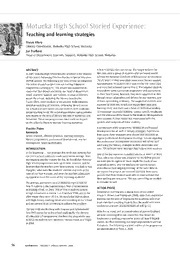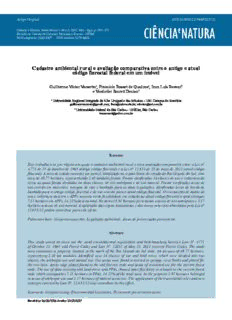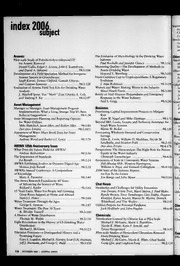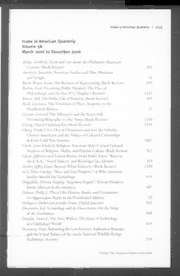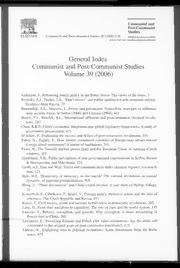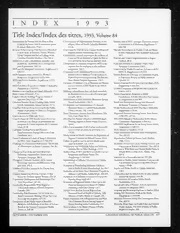
Preview Elementary Linear Algebra
WileyPLUS builds students’ confidence because it takes the guesswork out of studying by providing students with a clear roadmap: • what to do • how to do it • if they did it right It offers interactive resources along with a complete digital textbook that help students learn more. With WileyPLUS, students take more initiative so you’ll have greater impact on their achievement in the classroom and beyond. For more information, visit www.wileyplus.com Now available for WileyPLUS is a research-based online environment for effective teaching and learning. ALL THE HELP, RESOURCES, AND PERSONAL SUPPORT YOU AND YOUR STUDENTS NEED! www.wileyplus.com/resources Technical Support 24/7 FAQs, online chat, and phone support www.wileyplus.com/support Student support from an experienced student user Collaborate with your colleagues, find a mentor, attend virtual and live events, and view resources 2-Minute Tutorials and all of the resources you and your students need to get started Your WileyPLUS Account Manager, providing personal training and support www.WhereFacultyConnect.com Pre-loaded, ready-to-use assignments and presentations created by subject matter experts Student Partner Program Quick Start © Courtney Keating/iStockphoto 11 T H E D I T I O N Elementary Linear Algebra Applications Version H O W A R D A N T O N Professor Emeritus, Drexel University C H R I S R O R R E S University of Pennsylvania VICE PRESIDENT AND PUBLISHER Laurie Rosatone SENIOR ACQUISITIONS EDITOR David Dietz ASSOCIATE CONTENT EDITOR Jacqueline Sinacori FREELANCE DEVELOPMENT EDITOR Anne Scanlan-Rohrer MARKETING MANAGER Melanie Kurkjian EDITORIAL ASSISTANT Michael O’Neal SENIOR PRODUCT DESIGNER Thomas Kulesa SENIOR PRODUCTION EDITOR Ken Santor SENIOR CONTENT MANAGER Karoline Luciano OPERATIONS MANAGER Melissa Edwards SENIOR DESIGNER Maddy Lesure MEDIA SPECIALIST Laura Abrams PHOTO RESEARCH EDITOR Felicia Ruocco COPY EDITOR Lilian Brady PRODUCTION SERVICES Carol Sawyer/The Perfect Proof COVER ART Norm Christiansen This book was set in Times New Roman STD by Techsetters, Inc. and printed and bound by Quad Graphics/Versailles. The cover was printed by Quad Graphics/Versailles. This book is printed on acid-free paper. Copyright 2014, 2010, 2005, 2000, 1994, 1991, 1987, 1984, 1981, 1977, 1973 by Anton Textbooks, Inc. All rights reserved. Published simultaneously in Canada. No part of this publication may be reproduced, stored in a retrieval system or transmitted in any form or by any means, electronic, mechanical, photocopying, recording, scanning, or otherwise, except as permitted under Sections 107 or 108 of the 1976 United States Copyright Act, without either the prior written permission of the Publisher, or authorization through payment of the appropriate per-copy fee to the Copyright Clearance Center, Inc., 222 Rosewood Drive, Danvers, MA 01923, website www.copyright.com. Requests to the Publisher for permission should be addressed to the Permissions Department, John Wiley & Sons, Inc., 111 River Street, Hoboken, NJ 07030-5774, (201) 748-6011, fax (201) 748-6008, website www.wiley.com/go/permissions. Best efforts have been made to determine whether the images of mathematicians shown in the text are in the public domain or properly licensed. If you believe that an error has been made, please contact the Permissions Department. Evaluation copies are provided to qualified academics and professionals for review purposes only, for use in their courses during the next academic year. These copies are licensed and may not be sold or transferred to a third party. Upon completion of the review period, please return the evaluation copy to Wiley. Return instructions and a free of charge return shipping label are available at www.wiley.com/go/returnlabel. Outside of the United States, please contact your local representative. Library of Congress Cataloging-in-Publication Data Anton, Howard, author. Elementary linear algebra : applications version / Howard Anton, Chris Rorres. -- 11th edition. pages cm Includes index. ISBN 978-1-118-43441-3 (cloth) 1. Algebras, Linear--Textbooks. I. Rorres, Chris, author. II. Title. QA184.2.A58 2013 512'.5--dc23 2013033542 ISBN 978-1-118-43441-3 ISBN Binder-Ready Version 978-1-118-47422-8 Printed in the United States of America 10 9 8 7 6 5 4 3 2 1 A B O U T T H E A U T H O R Howard Anton obtained his B.A. from Lehigh University, his M.A. from the University of Illinois, and his Ph.D. from the Polytechnic University of Brooklyn, all in mathematics. In the early 1960s he worked for Burroughs Corporation and Avco Corporation at Cape Canaveral, Florida, where he was involved with the manned space program. In 1968 he joined the Mathematics Department at Drexel University, where he taught full time until 1983. Since then he has devoted the majority of his time to textbook writing and activities for mathematical associations. Dr. Anton was president of the EPADEL Section of the Mathematical Association of America (MAA), served on the Board of Governors of that organization, and guided the creation of the Student Chapters of the MAA. In addition to various pedagogical articles, he has published numerous research papers in functional analysis, approximation theory, and topology. He is best known for his textbooks in mathematics, which are among the most widely used in the world. There are currently more than 175 versions of his books, including translations into Spanish, Arabic, Portuguese, Italian, Indonesian, French, Japanese, Chinese, Hebrew, and German. For relaxation, Dr. Anton enjoys travel and photography. Chris Rorres earned his B.S. degree from Drexel University and his Ph.D. from the Courant Institute of New York University. He was a faculty member of the Department of Mathematics at Drexel University for more than 30 years where, in addition to teaching, he did applied research in solar engineering, acoustic scattering, population dynamics, computer system reliability, geometry of archaeological sites, optimal animal harvesting policies, and decision theory. He retired from Drexel in 2001 as a Professor Emeritus of Mathematics and is now a mathematical consultant. He also has a research position at the School of Veterinary Medicine at the University of Pennsylvania where he does mathematical modeling of animal epidemics. Dr. Rorres is a recognized expert on the life and work of Archimedes and has appeared in various television documentaries on that subject. His highly acclaimed website on Archimedes (http://www.math.nyu.edu/~crorres/Archimedes/contents.html) is a virtual book that has become an important teaching tool in mathematical history for students around the world. To: My wife, Pat My children, Brian, David, and Lauren My parents, Shirley and Benjamin My benefactor, Stephen Girard (1750–1831), whose philanthropy changed my life Howard Anton To: Billie Chris Rorres vi P R E F A C E This textbook is an expanded version of Elementary Linear Algebra, eleventh edition, by Howard Anton. The first nine chapters of this book are identical to the first nine chapters of that text; the tenth chapter consists of twenty applications of linear algebra drawn from business, economics, engineering, physics, computer science, approximation theory, ecology, demography, and genetics. The applications are largely independent of each other, and each includes a list of mathematical prerequisites. Thus, each instructor has the flexibility to choose those applications that are suitable for his or her students and to incorporate each application anywhere in the course after the mathematical prerequisites have been satisfied. Chapters 1–9 include simpler treatments of some of the applications covered in more depth in Chapter 10. This edition gives an introductory treatment of linear algebra that is suitable for a first undergraduate course. Its aim is to present the fundamentals of linear algebra in the clearest possible way—sound pedagogy is the main consideration. Although calculus is not a prerequisite, there is some optional material that is clearly marked for students with a calculus background. If desired, that material can be omitted without loss of continuity. Technology is not required to use this text, but for instructors who would like to use MATLAB, Mathematica, Maple, or calculators with linear algebra capabilities, we have posted some supporting material that can be accessed at either of the following companion websites: www.howardanton.com www.wiley.com/college/anton Summary of Changes in This Edition Many parts of the text have been revised based on an extensive set of reviews. Here are the primary changes: • EarlierLinearTransformations Lineartransformationsareintroducedearlier(starting in Section 1.8). Many exercise sets, as well as parts of Chapters 4 and 8, have been revised in keeping with the earlier introduction of linear transformations. • New Exercises Hundreds of new exercises of all types have been added throughout the text. • Technology Exercises requiring technology such as MATLAB, Mathematica, or Maple have been added and supporting data sets have been posted on the companion websites for this text. The use of technology is not essential, and these exercises can be omitted without affecting the flow of the text. • ExerciseSetsReorganized Manymultiple-partexerciseshavebeensubdividedtocreate a better balance between odd and even exercise types. To simplify the instructor’s task of creating assignments, exercise sets have been arranged in clearly defined categories. • Reorganization In addition to the earlier introduction of linear transformations, the old Section 4.12 on Dynamical Systems and Markov Chains has been moved to Chap- ter 5 in order to incorporate material on eigenvalues and eigenvectors. • Rewriting Section 9.3 on Internet Search Engines from the previous edition has been rewritten to reflect more accurately how the Google PageRank algorithm works in practice. That section is now Section 10.20 of the applications version of this text. • Appendix A Rewritten The appendix on reading and writing proofs has been expanded and revised to better support courses that focus on proving theorems. • Web Materials Supplementary web materials now include various applications mod- ules, three modules on linear programming, and an alternative presentation of deter- minants based on permutations. • Applications Chapter Section 10.2 of the previous edition has been moved to the websites that accompany this text, so it is now part of a three-module set on Linear Preface vii Programming. A new section on Internet search engines has been added that explains the PageRank algorithm used by Google. Hallmark Features • Relationships Among Concepts One of our main pedagogical goals is to convey to the student that linear algebra is a cohesive subject and not simply a collection of isolated definitions and techniques. One way in which we do this is by using a crescendo of Equivalent Statements theorems that continually revisit relationships among systems of equations, matrices, determinants, vectors, linear transformations, and eigenvalues. To get a general sense of how we use this technique see Theorems 1.5.3, 1.6.4, 2.3.8, 4.8.8, and then Theorem 5.1.5, for example. • Smooth Transition to Abstraction Because the transition from Rn to general vector spaces is difficult for many students, considerable effort is devoted to explaining the purpose of abstraction and helping the student to “visualize” abstract ideas by drawing analogies to familiar geometric ideas. • Mathematical Precision When reasonable, we try to be mathematically precise. In keeping with the level of student audience, proofs are presented in a patient style that is tailored for beginners. • Suitability for a Diverse Audience This text is designed to serve the needs of students in engineering, computer science, biology, physics, business, and economics as well as those majoring in mathematics. • Historical Notes To give the students a sense of mathematical history and to convey that real people created the mathematical theorems and equations they are studying, we have included numerous Historical Notes that put the topic being studied in historical perspective. About the Exercises • Graded Exercise Sets Each exercise set in the first nine chapters begins with routine drill problems and progresses to problems with more substance. These are followed by three categories of exercises, the first focusing on proofs, the second on true/false exercises, and the third on problems requiring technology. This compartmentalization is designed to simplify the instructor’s task of selecting exercises for homework. • Proof Exercises Linear algebra courses vary widely in their emphasis on proofs, so exercises involving proofs have been grouped and compartmentalized for easy identifi- cation. Appendix A has been rewritten to provide students more guidance on proving theorems. • True/False Exercises The True/False exercises are designed to check conceptual un- derstanding and logical reasoning. To avoid pure guesswork, the students are required to justify their responses in some way. • Technology Exercises Exercises that require technology have also been grouped. To avoid burdening the student with keyboarding, the relevant data files have been posted on the websites that accompany this text. • Supplementary Exercises Each of the first nine chapters ends with a set of supplemen- tary exercises that draw on all topics in the chapter. These tend to be more challenging. Supplementary Materials for Students • Student Solutions Manual This supplement provides detailed solutions to most odd- numbered exercises (ISBN 978-1-118-464427). • DataFiles Datafilesforthetechnologyexercisesarepostedonthecompanionwebsites that accompany this text. • MATLAB Manual and Linear Algebra Labs This supplement contains a set of MATLAB laboratory projects written by Dan Seth of West Texas A&M University. It is designed to help students learn key linear algebra concepts by using MATLAB and is available in PDF form without charge to students at schools adopting the 11th edition of the text. • Videos A complete set of Daniel Solow’s How to Read and Do Proofs videos is available to students through WileyPLUS as well as the companion websites that accompany viii Preface this text. Those materials include a guide to help students locate the lecture videos appropriate for specific proofs in the text. Supplementary Materials for Instructors • Instructor’s Solutions Manual This supplement provides worked-out solutions to most exercises in the text (ISBN 978-1-118-434482). • PowerPoint Presentations PowerPoint slides are provided that display important def- initions, examples, graphics, and theorems in the book. These can also be distributed to students as review materials or to simplify note taking. • Test Bank Test questions and sample exams are available in PDF or LATEX form. • WileyPLUS An online environment for effective teaching and learning. WileyPLUS builds student confidence by taking the guesswork out of studying and by providing a clear roadmap of what to do, how to do it, and whether it was done right. Its purpose is to motivate and foster initiative so instructors can have a greater impact on classroom achievement and beyond. A Guide for the Instructor Although linear algebra courses vary widely in content and philosophy, most courses fall into two categories—those with about 40 lectures and those with about 30 lectures. Accordingly, we have created long and short templates as possible starting points for constructing a course outline. Of course, these are just guides, and you will certainly want to customize them to fit your local interests and requirements. Neither of these sample templates includes applications or the numerical methods in Chapter 9. Those can be added, if desired, and as time permits. Long Template Short Template Chapter 1: Systems of Linear Equations and Matrices 8 lectures 6 lectures Chapter 2: Determinants 3 lectures 2 lectures Chapter 3: Euclidean Vector Spaces 4 lectures 3 lectures Chapter 4: General Vector Spaces 10 lectures 9 lectures Chapter 5: Eigenvalues and Eigenvectors 3 lectures 3 lectures Chapter 6: Inner Product Spaces 3 lectures 1 lecture Chapter 7: Diagonalization and Quadratic Forms 4 lectures 3 lectures Chapter 8: General Linear Transformations 4 lectures 3 lectures Total: 39 lectures 30 lectures Reviewers The following people reviewed the plans for this edition, critiqued much of the content, and provided me with insightful pedagogical advice: John Alongi, Northwestern University Jiu Ding, University of Southern Mississippi Eugene Don, City University of New York at Queens John Gilbert, University of Texas Austin Danrun Huang, St. Cloud State University Craig Jensen, University of New Orleans Steve Kahan, City University of New York at Queens Harihar Khanal, Embry-Riddle Aeronautical University Firooz Khosraviyani, Texas A&M International University Y. George Lai, Wilfred Laurier University Kouok Law, Georgia Perimeter College Mark MacLean, Seattle University Preface ix Vasileios Maroulas, University of Tennessee, Knoxville Daniel Reynolds, Southern Methodist University Qin Sheng, Baylor University Laura Smithies, Kent State University Larry Susanka, Bellevue College Cristina Tone, University of Louisville Yvonne Yaz, Milwaukee School of Engineering Ruhan Zhao, State University of New York at Brockport Exercise Contributions Special thanks are due to three talented people who worked on various aspects of the exercises: Przemyslaw Bogacki, Old Dominion University – who solved the exercises and created the solutions manuals. Roger Lipsett, Brandeis University – who proofread the manuscript and exercise solu- tions for mathematical accuracy. Daniel Solow, Case Western Reserve University – author of “How to Read and Do Proofs,” for providing videos on techniques of proof and a key to using those videos in coordi- nation with this text. Sky Pelletier Waterpeace – who critiqued the technology exercises, suggested improve- ments, and provided the data sets. Special Contributions I would also like to express my deep appreciation to the following people with whom I worked on a daily basis: Anton Kaul – who worked closely with me at every stage of the project and helped to write some new text material and exercises. On the many occasions that I needed mathematical or pedagogical advice, he was the person I turned to. I cannot thank him enough for his guidance and the many contributions he has made to this edition. David Dietz – my editor, for his patience, sound judgment, and dedication to producing a quality book. Anne Scanlan-Rohrer – of Two Ravens Editorial, who coordinated the entire project and brought all of the pieces together. Jacqueline Sinacori – who managed many aspects of the content and was always there to answer my often obscure questions. Carol Sawyer – of The Perfect Proof, who managed the myriad of details in the production process and helped with proofreading. Maddy Lesure – with whom I have worked for many years and whose elegant sense of design is apparent in the pages of this book. Lilian Brady – my copy editor for almost 25 years. I feel fortunate to have been the ben- eficiary of her remarkable knowledge of typography, style, grammar, and mathematics. Pat Anton – of Anton Textbooks, Inc., who helped with the mundane chores duplicating, shipping, accuracy checking, and tasks too numerous to mention. John Rogosich – of Techsetters, Inc., who programmed the design, managed the compo- sition, and resolved many difficult technical issues. Brian Haughwout – of Techsetters, Inc., for his careful and accurate work on the illustra- tions. Josh Elkan – for providing valuable assistance in accuracy checking. Howard Anton Chris Rorres x C O N T E N T S C H A P T E R 1 Systems of Linear Equations and Matrices 1 1.1 Introduction to Systems of Linear Equations 2 1.2 Gaussian Elimination 11 1.3 Matrices and Matrix Operations 25 1.4 Inverses; Algebraic Properties of Matrices 39 1.5 Elementary Matrices and a Method for Finding A−1 52 1.6 More on Linear Systems and Invertible Matrices 61 1.7 Diagonal, Triangular, and Symmetric Matrices 67 1.8 Matrix Transformations 75 1.9 Applications of Linear Systems 84 • Network Analysis (Traffic Flow) 84 • Electrical Circuits 86 • Balancing Chemical Equations 88 • Polynomial Interpolation 91 1.10 Application: Leontief Input-Output Models 96 C H A P T E R 2 Determinants 105 2.1 Determinants by Cofactor Expansion 105 2.2 Evaluating Determinants by Row Reduction 113 2.3 Properties of Determinants; Cramer’s Rule 118 C H A P T E R 3 Euclidean Vector Spaces 131 3.1 Vectors in 2-Space, 3-Space, and n-Space 131 3.2 Norm, Dot Product, and Distance in Rn 142 3.3 Orthogonality 155 3.4 The Geometry of Linear Systems 164 3.5 Cross Product 172 C H A P T E R 4 General Vector Spaces 183 4.1 Real Vector Spaces 183 4.2 Subspaces 191 4.3 Linear Independence 202 4.4 Coordinates and Basis 212 4.5 Dimension 221 4.6 Change of Basis 229 4.7 Row Space, Column Space, and Null Space 237 4.8 Rank, Nullity, and the Fundamental Matrix Spaces 248 4.9 Basic Matrix Transformations in R2 and R3 259 4.10 Properties of Matrix Transformations 270 4.11 Application: Geometry of Matrix Operators on R2 280 Contents xi C H A P T E R 5 Eigenvalues and Eigenvectors 291 5.1 Eigenvalues and Eigenvectors 291 5.2 Diagonalization 302 5.3 Complex Vector Spaces 313 5.4 Application: Differential Equations 326 5.5 Application: Dynamical Systems and Markov Chains 332 C H A P T E R 6 Inner Product Spaces 345 6.1 Inner Products 345 6.2 Angle and Orthogonality in Inner Product Spaces 355 6.3 Gram–Schmidt Process; QR-Decomposition 364 6.4 Best Approximation; Least Squares 378 6.5 Application: Mathematical Modeling Using Least Squares 387 6.6 Application: Function Approximation; Fourier Series 394 C H A P T E R 7 Diagonalization and Quadratic Forms 401 7.1 Orthogonal Matrices 401 7.2 Orthogonal Diagonalization 409 7.3 Quadratic Forms 417 7.4 Optimization Using Quadratic Forms 429 7.5 Hermitian, Unitary, and Normal Matrices 437 C H A P T E R 8 General Linear Transformations 447 8.1 General Linear Transformations 447 8.2 Compositions and Inverse Transformations 458 8.3 Isomorphism 466 8.4 Matrices for General Linear Transformations 472 8.5 Similarity 481 C H A P T E R 9 Numerical Methods 491 9.1 LU-Decompositions 491 9.2 The Power Method 501 9.3 Comparison of Procedures for Solving Linear Systems 509 9.4 Singular Value Decomposition 514 9.5 Application: Data Compression Using Singular Value Decomposition 521 C H A P T E R 10 Applications of Linear Algebra 527 10.1 Constructing Curves and Surfaces Through Specified Points 528 10.2 The Earliest Applications of Linear Algebra 533 10.3 Cubic Spline Interpolation 540 xii Contents 10.4 Markov Chains 551 10.5 Graph Theory 561 10.6 Games of Strategy 570 10.7 Leontief Economic Models 579 10.8 Forest Management 588 10.9 Computer Graphics 595 10.10 Equilibrium Temperature Distributions 603 10.11 Computed Tomography 613 10.12 Fractals 624 10.13 Chaos 639 10.14 Cryptography 652 10.15 Genetics 663 10.16 Age-Specific Population Growth 673 10.17 Harvesting of Animal Populations 683 10.18 A Least Squares Model for Human Hearing 691 10.19 Warps and Morphs 697 10.20 Internet Search Engines 706 A P P E N D I X A Working with Proofs A1 A P P E N D I X B Complex Numbers A5 Answers to Exercises A13 Index I1 1 C H A P T E R 1 Systems of Linear Equations and Matrices CHAPTER CONTENTS 1.1 Introduction to Systems of Linear Equations 2 1.2 Gaussian Elimination 11 1.3 Matrices and Matrix Operations 25 1.4 Inverses; Algebraic Properties of Matrices 39 1.5 Elementary Matrices and a Method for Finding A−1 52 1.6 More on Linear Systems and Invertible Matrices 61 1.7 Diagonal,Triangular, and Symmetric Matrices 67 1.8 MatrixTransformations 75 1.9 Applications of Linear Systems 84 • Network Analysis (Traffic Flow) 84 • Electrical Circuits 86 • Balancing Chemical Equations 88 • Polynomial Interpolation 91 1.10 Leontief Input-Output Models 96 INTRODUCTION Information in science, business, and mathematics is often organized into rows and columns to form rectangular arrays called “matrices” (plural of “matrix”). Matrices often appear as tables of numerical data that arise from physical observations, but they occur in various mathematical contexts as well. For example, we will see in this chapter that all of the information required to solve a system of equations such as 5x + y = 3 2x − y = 4 is embodied in the matrix � 5 2 1 −1 3 4 � and that the solution of the system can be obtained by performing appropriate operations on this matrix. This is particularly important in developing computer programs for solving systems of equations because computers are well suited for manipulating arrays of numerical information. However, matrices are not simply a notational tool for solving systems of equations; they can be viewed as mathematical objects in their own right, and there is a rich and important theory associated with them that has a multitude of practical applications. It is the study of matrices and related topics that forms the mathematical field that we call “linear algebra.” In this chapter we will begin our study of matrices.
The list of books you might like

The Subtle Art of Not Giving a F*ck

Believe Me

The Spanish Love Deception

The 48 Laws of Power
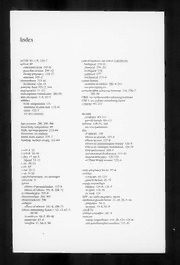
Oxford Reviews of Reproductive Biology 1993: Vol 15 Index
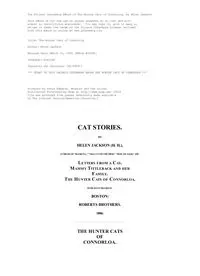
The Hunter Cats of Connorloa by Helen Jackson H H
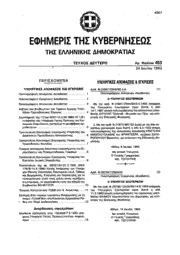
Greek Government Gazette: Part 2, 1993 no. 453
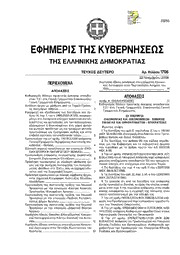
Greek Government Gazette: Part 2, 2006 no. 1706
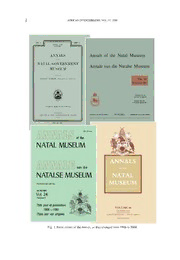
The Natal Museum and its journals : celebrating a century of publication, 1906-2005
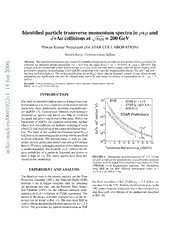
Identified particle transverse momentum spectra in p+p and d+Au collisions at sqrt{s_NN} = 200 GeV
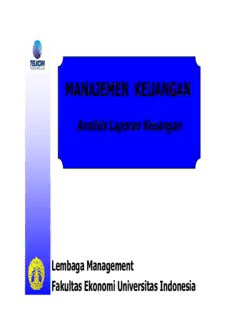
analisis laporan keuangan

Value Chain Struggles: Institutions and Governance in the Plantation Districts of South India

Medium, Bote, Übertragung: Kleine Metaphysik der Medialität

alu insertion polymorphisms in anatolian turks a thesis submitted to
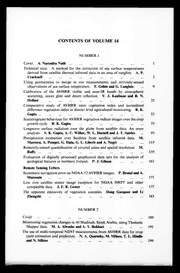
International Journal of Remote Sensing 1993: Vol 14 Table of Contents

Ética del Desarrollo


